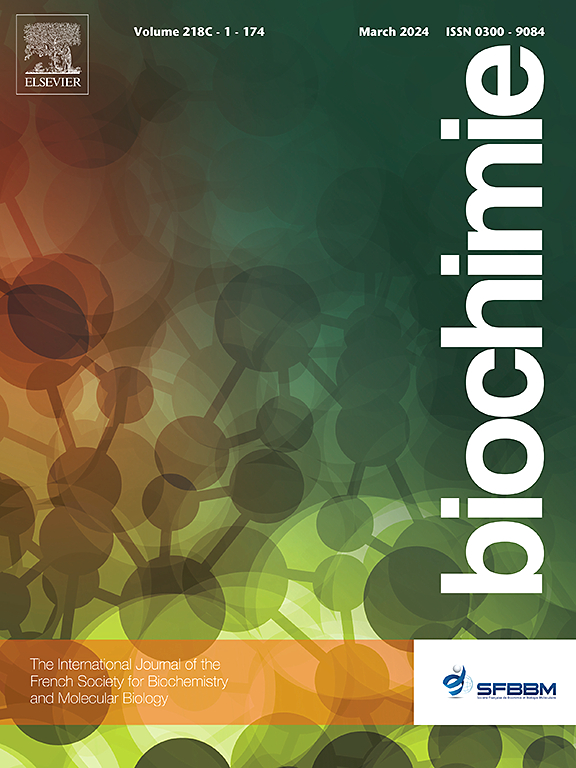Molecular and biochemical approaches of the trypanothione system in Leishmania spp.: A key player in parasite resistance to antimonial therapy
IF 3
3区 生物学
Q2 BIOCHEMISTRY & MOLECULAR BIOLOGY
引用次数: 0
Abstract
The trypanothione system is a crucial antioxidant defense mechanism in Leishmania spp. The enzymes involved, including trypanothione reductase (TR), trypanothione synthetase (TS), tryparedoxin (TXN) and tryparedoxin peroxidase (TXNPx) are essential for maintaining the redox balance. This system plays a fundamental role in the biology of Leishmania spp., contributing to parasite resistance against metalloid-based treatments, such as trivalent antimony (Sb3+). The mechanisms underlying this resistance, particularly those linked to the functionality of the trypanothione system, have garnered increasing interest. This review prioritizes studies conducted with clinical isolates of Leishmania spp. that evaluated gene expression, protein abundance, and enzyme activity to determine how variations in trypanothione-related mechanisms influence their clinical outcomes. Additionally, complementary strategy involving different protocols to determine intracellular non-protein thiols have further enrich the information into these studies. Notably, the evidence gathered here highlights that studies have focused on only four Leishmania spp. with just one belonging to the Viannia subgenus. Several approaches have been used to determine TR and TXNPx enzyme activity in parasite lysates, supporting their use as tools for studying resistant phenotypes. Additionally, the assessment of TR, TXNPx and TS activities has been applied in kinetic studies for screening of inhibitor compounds. The functional insights presented herein may aid in elucidating the basis of parasite resistance and guide the development of more effective therapeutic strategies against leishmaniasis in its different clinical forms.
利什曼原虫中锥虫硫酮系统的分子和生化研究:对抗疟治疗产生抗性的关键因素。
所涉及的酶,包括胰硫还原酶(TR)、胰硫合成酶(TS)、胰蛋白酶(TXN)和胰蛋白酶过氧化物酶(TXNPx),对于维持氧化还原平衡至关重要。该系统在利什曼病菌的生物学中起着至关重要的作用,有助于寄生虫对三价锑(Sb3+)等金属疗法产生抗药性。抗药性机制,尤其是与该系统功能有关的机制,已成为人们日益关注的焦点。具体而言,本综述将优先考虑对利什曼原虫临床分离株进行的研究,这些研究评估了基因表达、蛋白质丰度和酶活性,以确定与锥硫蛋白相关的机制变化如何影响临床结果。作为一种补充策略,还采用了不同的方案来确定细胞内的非蛋白质硫醇,从而进一步丰富了这些研究的信息。值得注意的是,本文收集的证据表明,这些研究只关注了四种利什曼原虫,其中只有一种属于维尼亚亚属。有几种方法可用于确定寄生虫裂解液中 TR 和 TXNPx 酶的活性,支持将它们用作研究抗性表型的工具。此外,对 TR、TXNPx 和 TS 活性的评估还被应用于动力学研究,以筛选抑制剂化合物。本文提出的功能性见解可能有助于阐明寄生虫抗药性的基础,并指导开发针对不同临床形式利什曼病的更有效的治疗策略。
本文章由计算机程序翻译,如有差异,请以英文原文为准。
求助全文
约1分钟内获得全文
求助全文
来源期刊

Biochimie
生物-生化与分子生物学
CiteScore
7.20
自引率
2.60%
发文量
219
审稿时长
40 days
期刊介绍:
Biochimie publishes original research articles, short communications, review articles, graphical reviews, mini-reviews, and hypotheses in the broad areas of biology, including biochemistry, enzymology, molecular and cell biology, metabolic regulation, genetics, immunology, microbiology, structural biology, genomics, proteomics, and molecular mechanisms of disease. Biochimie publishes exclusively in English.
Articles are subject to peer review, and must satisfy the requirements of originality, high scientific integrity and general interest to a broad range of readers. Submissions that are judged to be of sound scientific and technical quality but do not fully satisfy the requirements for publication in Biochimie may benefit from a transfer service to a more suitable journal within the same subject area.
 求助内容:
求助内容: 应助结果提醒方式:
应助结果提醒方式:


